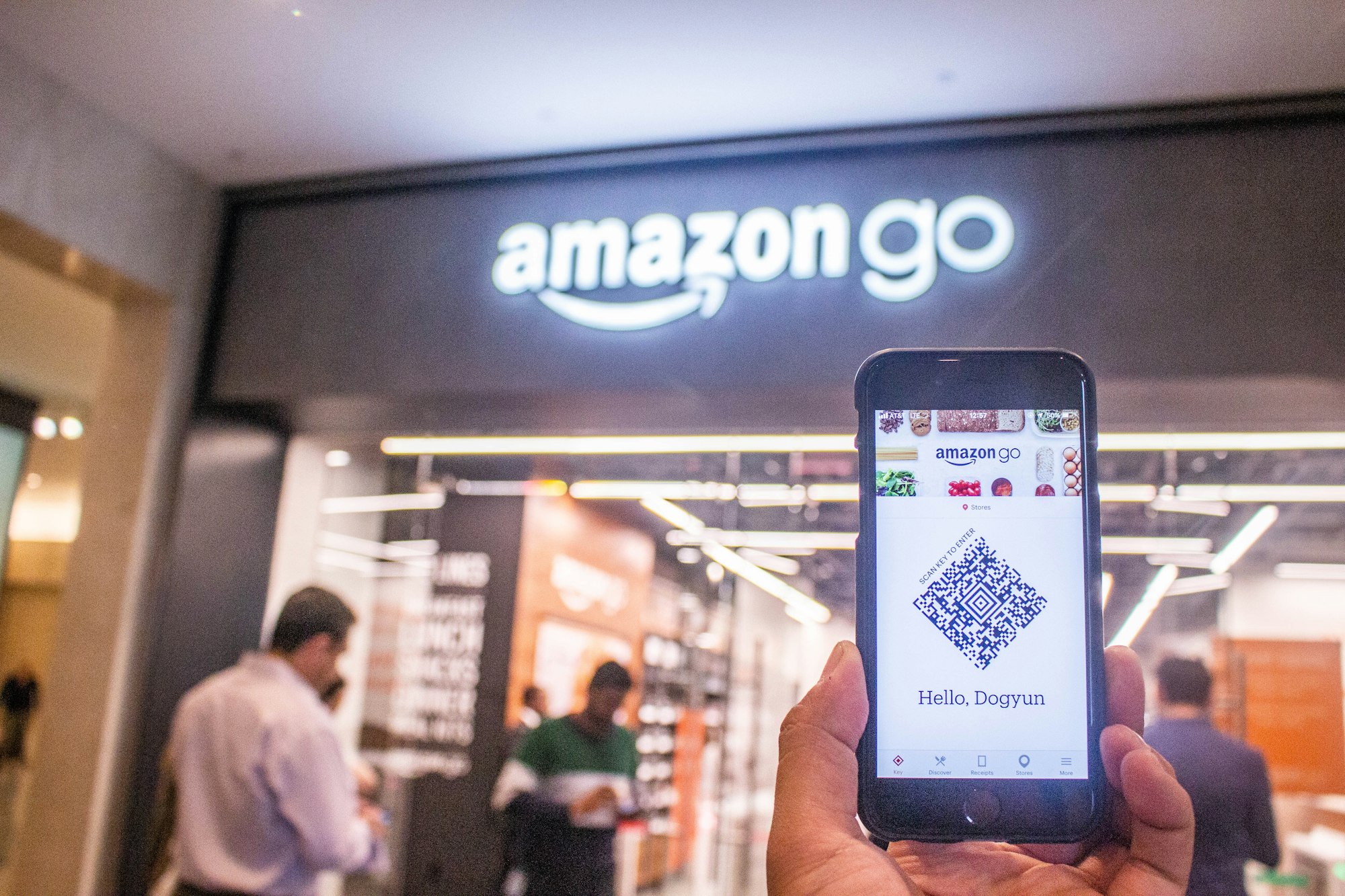Price It Right: Pricing Strategies to Make Your Business Stand Out
We all know the four P’s of Marketing: Product, Place, Promotion, and Price. Today we're looking at the one "P" that more often than not leaves business owners scratching their heads: Price.
Finding the ideal pricing strategy is like navigating a maze without a map. The terrain is peppered with terms like cost-plus pricing, value-based pricing, and penetration pricing—enough to make your head spin.
You don't want your customers feeling short-changed, and you certainly don't want to leave money on the table.
How much should your customers shell out for your fantastic offering? What is the most effective way to determine the right pricing strategy? And does one size fit all, or does each product need its own gameplan?
In this blog post, we will look at different strategies and methods to find a pricing strategy that fits snugly with what you offer and who you're offering it to—getting the price right perfectly every time.
Because whether you're a seasoned entrepreneur or just starting, the world of pricing doesn't have to be a baffling black hole. Let's go!

What are pricing strategies and why are they important?
In a nutshell, pricing strategies are methods that companies use to determine the cost of goods and services. These strategies, akin to roadmaps, help companies carve their way through factors like product demand, cost of goods sold, consumer behaviour, and market conditions to set a price that aligns with their objectives.
Businesses adopt diverse pricing strategies based on their goals. Some aim to maximise profit margins, while others seek to expand their market share and attract new customers. Meanwhile, certain enterprises focus on liquidating old inventory.
In a competitive retail landscape, pricing emerges as a potent tool, allowing businesses to gain a strategic edge. Vigilantly monitoring competitors' prices and adjusting your own enables you to adapt swiftly to market fluctuations and distinguish your offerings.
Consistency and transparency in pricing cultivate trust among customers, fostering repeat purchases and sparking positive word-of-mouth referrals.
The importance of crafting the perfect strategy for your business cannot be overstated. The art of pricing is not merely about numbers—it's about crafting a narrative that resonates with both the business and its customers.
Effective pricing strategies serve as the cornerstone of business decision-making, guiding companies towards financial success while building lasting relationships with their customer base.

The Importance of Choosing the Right Pricing Strategy
Deciding on the right pricing strategy is a strategic decision that can either propel your business to new heights or leave it grappling with missed opportunities and diminished revenue.
The repercussions of pricing decisions reverberate through various facets of your business. Revenue, profit margins, customer perception, and competitiveness in the market are all directly influenced by your pricing strategy.
At the forefront, price stands as the pivotal factor steering a customer's purchasing decision. A meticulously crafted pricing strategy can act as a magnetic force, drawing potential customers towards your offerings and distinguishing your store from competitors. Whether it's competitive pricing or a value-added approach, the right pricing strategy positions you as a compelling choice in the market.
Beyond attracting customers, an effective pricing strategy strikes a delicate balance between revenue generation and maintaining robust profit margins.
Prices set too low might entice customers but risk compromising profitability, while prices set too high could discourage potential buyers. It's a tightrope walk that requires precision and insight.
Moreover, the prices you establish communicate volumes about your brand's identity. Premium pricing exudes an aura of high quality and exclusivity, while budget pricing aligns with notions of affordability and value for money.
A well-chosen pricing strategy acts as a conduit, seamlessly connecting your brand image with the expectations of your target customers.

What is Advanced Pricing?
Advanced pricing is when a company employs more than one pricing strategy simultaneously, all in the pursuit of maximising profits. The rationale behind this approach is to navigate market fluctuations and meet customer demand while ensuring a healthy bottom line.
One of the key advantages of advanced pricing lies in its ability to respond adeptly to the ever-shifting market dynamics. By incorporating multiple pricing strategies, a company can not only stay competitive but also enhance its profit margins. The strategy aims to fine-tune pricing based on market variables and product features, catering to diverse market sectors and providing flexibility for business owners to respond swiftly to competitors' pricing tactics and marketing initiatives.
However, the implementation of advanced pricing is not without its challenges. Altering the prices of goods and services can be a delicate balancing act, potentially impacting the business significantly.
To craft a flexible and effective advanced pricing strategy, several critical factors must be carefully considered. These factors include keeping a vigilant eye on competitors, adapting to market fluctuations, understanding consumer demands, accounting for the cost of goods sold (COGS), maintaining a strong brand presence, defining a clear target audience, aligning with marketing efforts, and highlighting product/service features.
In short, advanced pricing is a nuanced strategy that goes beyond a one-size-fits-all approach. By integrating multiple pricing strategies and carefully navigating the intricacies of the market, businesses can not only stay ahead of the competition but also ensure a profitable and sustainable future.

A Retailer's Pricing Strategy Can’t Be One-Dimensional
When it comes to the retail sector, pricing stands as the foremost and most influential lever that directly impacts GMROI (gross margin return on investment). Recognising this, retailers employ pricing strategies as a multifaceted tool to wield control over demand, profitability, and brand image, thereby gaining a crucial competitive edge.
The significance of a well-crafted pricing strategy cannot be overstated. An ineffective approach can wreak havoc, leading to lost sales, surplus inventory, and tarnished brand image. The contemporary retail landscape, with its blend of omnichannel shopping complexities and the prevalence of price matching, demands a pricing solution that can match the pace, provide accurate information, and ensure competitiveness.
Hence, it's no surprise that a growing number of retailers are turning their attention towards investing in price management analytics solutions. This strategic shift is underlined by the need to navigate the intricate web of retail pricing efficiently.
The evolving retail environment demands a departure from one-dimensional pricing strategies. Retailers are embracing the complexity of omnichannel dynamics and price matching challenges by investing in sophisticated price management analytics, ensuring they stay ahead in the race for competitiveness, information accuracy, and overall market relevance.

Why Crafting a Retail Pricing Strategy is so Challenging
Developing a robust pricing strategy for the retail landscape is no easy feat, and the hurdles are numerous.
The primary reason lies in the sheer multitude of factors that come into play. Whether introducing a new retail channel or launching a fresh product, each addition exponentially increases the complexity of the pricing equation.
To navigate this complexity successfully, a retailer needs more than just a pricing strategy—it requires a unified approach that can seamlessly adapt to a multichannel environment.
This means having a comprehensive understanding of what's happening in every channel used to sell products. Achieving visibility across the business is crucial, but that's just the tip of the iceberg.
The challenge extends to considering an array of internal and external factors that have a direct impact on pricing and demand. Imagine this complexity as an intricate web, where changes in one factor send ripples across numerous others.
For example, a seemingly innocent decision like introducing a new shampoo with a lower price promotion could unexpectedly cannibalise sales from existing shampoo inventory already on the shelf.
This intricate dance of pricing considerations includes various elements such as past sales history, external market forces, and internal inventory dynamics.
Relying on spreadsheets to determine prices using historical data becomes not only cumbersome but also highly ineffective. It's a time-consuming, costly process that results in inaccuracies and struggles to scale in the face of an ever-evolving retail landscape.
So the challenge of setting retail prices stems from the intricate interplay of myriad factors. A successful pricing strategy demands a holistic, multichannel approach that goes beyond traditional methods, embracing the complexities of the modern retail environment.
Only then can retailers hope to navigate the web of pricing intricacies effectively and ensure a strategy that is both adaptable and scalable.

How Are Industry Leaders Setting Retail Prices?
The retailing playbook has undergone a significant transformation, with omnichannel retailing becoming the gold standard. To navigate this complex terrain, leading retailers are turning to cutting-edge innovations capable of seamlessly handling the intricacies of modern retail pricing.
At the forefront of this revolution is the adoption of Unified Pricing, Promotion, and Markdown Optimization (UPPMO) solutions. These sophisticated tools enable retailers to craft pricing strategies that transcend channels, store types, and locations, effortlessly accounting for all the relevant factors in play.
The effectiveness of UPPMO solutions lies in their ability to streamline cross-channel operations, providing a unified framework for retailers to navigate the complexities of the modern retail ecosystem. Whether it's adjusting prices to align with demand fluctuations, managing promotions, or optimising markdowns, these solutions offer a comprehensive approach.
Industry leaders have long championed the value of UPPMO solutions, and the results speak for themselves. This strategic shift towards unified advanced analytics is not a mere trend but a consensus among successful retailers.
It begins with optimised demand forecasting, laying the foundation for a cohesive and adaptable approach to pricing that resonates with the demands of the modern consumer landscape.
The retail pricing landscape is experiencing a paradigm shift led by industry trailblazers. Pricing analytics coupled with UPPMO solutions, are the secret weapons empowering retailers to not just keep up with but stay ahead of the ever-evolving retail dynamics. This unified approach is not just a strategy—it's a proven formula embraced by modern retail successes.

What is Dynamic Pricing?
Picture this: during a flash sale, prices take a dip to entice buyers, and when faced with a product shortage, they might ascend.
This is called Dynamic Pricing. Dynamic Pricing is a game-changing, algorithm-driven concept that is reshaping the landscape of online shopping and autonomous store experiences.
Platforms like Amazon are at the forefront of deploying dynamic pricing, a strategic move aimed at maximising profit margins by offering competitive prices while maintaining profitability. The beauty of this approach lies in its ability to make constant adjustments, strategically lowering prices to boost sales during promotions and promptly responding to competitor actions with unwavering agility.
Dynamic pricing is not just a strategy—it's a real-time pricing approach that empowers businesses to adapt swiftly to the dynamic nature of the market.
Rooted in economic principles, this model allows businesses to adjust the prices of their products or services on the fly, responding to the ebb and flow of market demands, competition, and other factors meticulously programmed into the pricing strategy.
By harnessing the power of real-time adjustments, businesses can ride the waves of supply and demand, ensuring not only competitive pricing but also the agility needed to thrive in the ever-evolving marketplace.

How is Dynamic Pricing Implemented?
Dynamic Pricing exemplifies the pinnacle of automation in retail, where sophisticated systems seamlessly crunch vast datasets to make informed decisions.
Dynamic pricing uses algorithms and artificial intelligence (AI) to navigate the intricate web of competitor prices, inventory levels, consumer behaviour, and market trends.
The result? Prices that are adjusted with remarkable frequency, sometimes minute by minute, mirroring the ever-shifting tides of the market.
Contrasting this dynamic approach is static pricing—a more traditional strategy where prices are primarily fixed but may undergo periodic changes triggered by specific factors.
Unlike dynamic pricing, these adjustments are infrequent and lack the immediacy to respond to short-term external influences such as daily market fluctuations or subtle shifts in demand.
In reality, even static pricing strategies may involve occasional tweaks, yet the critical distinction lies in their relative lack of nimbleness and responsiveness compared to dynamic pricing strategies.
Recent surveys reveal a substantial interest in dynamic pricing, with approximately one in five ecommerce businesses in North America and Europe already implementing it, and a significant 63% considering, doing, or planning to introduce dynamic pricing in the future.
This growing interest underscores the recognition of dynamic pricing as a crucial strategy for maintaining competitiveness.
The true value of dynamic pricing becomes apparent in specific retail sectors, including fashion, electronics, and online marketplaces, as well as industries such as travel and hospitality.
This approach offers the agility to adapt swiftly to market changes and optimise pricing for the benefit of both businesses and consumers. When executed effectively, dynamic pricing becomes a powerful tool, enabling businesses to align with market realities and achieve tangible, dynamic results.

Conclusion
In business, finding the right pricing solution is like fitting the right key into a lock—it should meet your needs seamlessly.
While a corner shop owner might handle pricing manually with spreadsheets, a growing retailer faces hurdles in scaling without the proper tools.
Imagine juggling thousands of products across numerous stores—both physical and online. Larger retailers need more than spreadsheets—they need advanced analytics and AI, making it possible to pursue a consistent pricing strategy across different channels.
Whether you're managing a whole store, a category, or even individual products, the right software tools will simplify the entire pricing process.
Integrating data-informed pricing into digital platforms requires a delicate balance between automation and human judgement.
The game-changer here is dynamic pricing. It's not just a profit-maximising tool—it's about finding the sweet spot between market demand and customer satisfaction.
For many retailers, dynamic pricing has emerged as a key competitive advantage in an ever-shifting marketplace. It's truly a game-changing technology, and worthwhile to consider for your business.